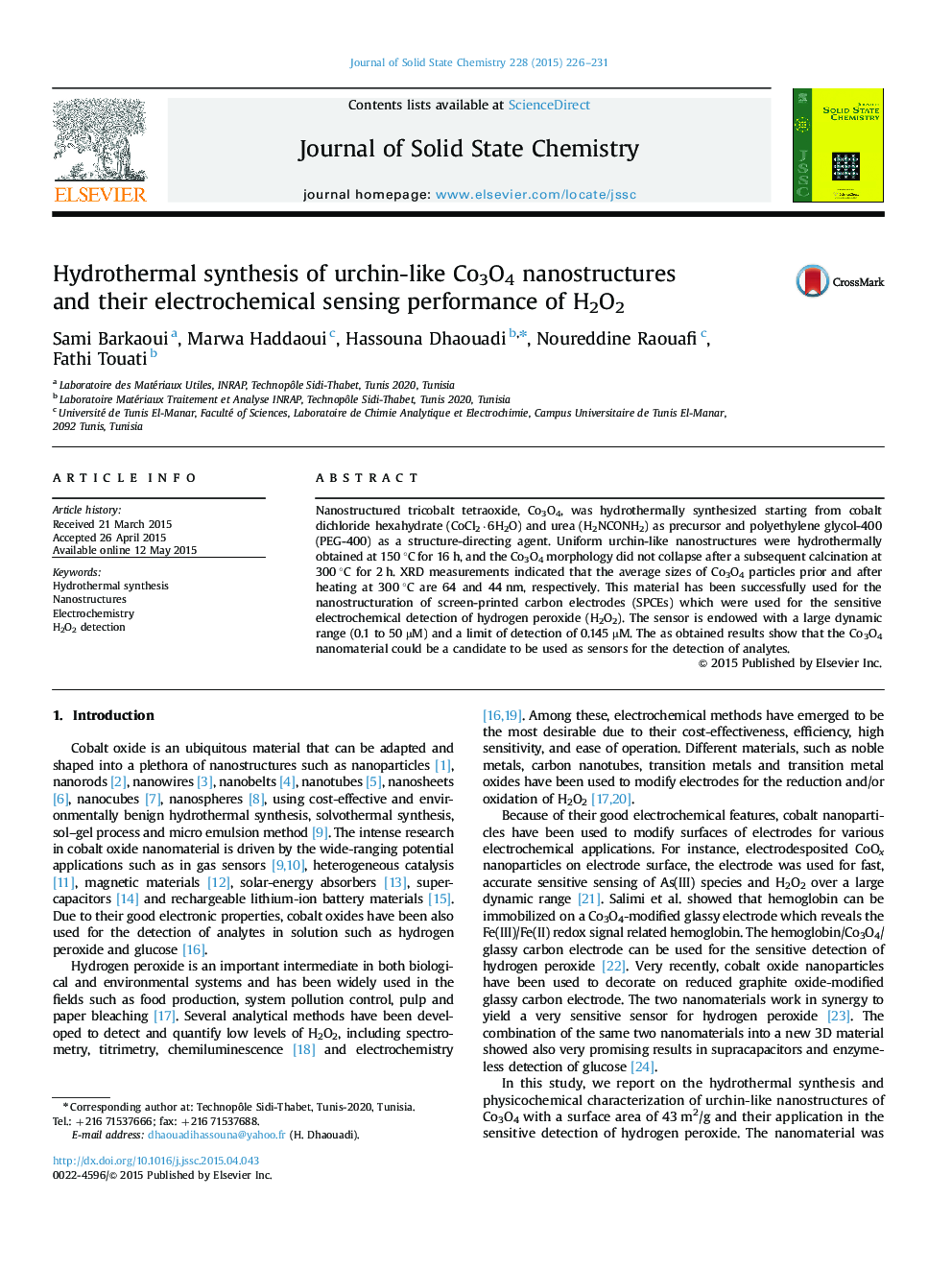| کد مقاله | کد نشریه | سال انتشار | مقاله انگلیسی | نسخه تمام متن |
|---|---|---|---|---|
| 1331511 | 1500088 | 2015 | 6 صفحه PDF | دانلود رایگان |

• Nanostructured was hydrothermally prepared using PEG-400.
• Uniform urchin-like Co3O4 nanostructures were hydrothermally obtained.
• X-ray diffraction showed a cubic structure after calcinations process.
• Nanostructured Co3O4 was used for the sensitive electrochemical detection of H2O2.
• The sensor is endowed with a large dynamic range 0.1 to 50 µM.
Nanostructured tricobalt tetraoxide, Co3O4, was hydrothermally synthesized starting from cobalt dichloride hexahydrate (CoCl2·6H2O) and urea (H2NCONH2) as precursor and polyethylene glycol-400 (PEG-400) as a structure-directing agent. Uniform urchin-like nanostructures were hydrothermally obtained at 150 °C for 16 h, and the Co3O4 morphology did not collapse after a subsequent calcination at 300 °C for 2 h. XRD measurements indicated that the average sizes of Co3O4 particles prior and after heating at 300 °C are 64 and 44 nm, respectively. This material has been successfully used for the nanostructuration of screen-printed carbon electrodes (SPCEs) which were used for the sensitive electrochemical detection of hydrogen peroxide (H2O2). The sensor is endowed with a large dynamic range (0.1 to 50 µM) and a limit of detection of 0.145 µM. The as obtained results show that the Co3O4 nanomaterial could be a candidate to be used as sensors for the detection of analytes.
The nanowires appear to have a common center and grow to the outside along the radial direction.Figure optionsDownload as PowerPoint slide
Journal: Journal of Solid State Chemistry - Volume 228, August 2015, Pages 226–231